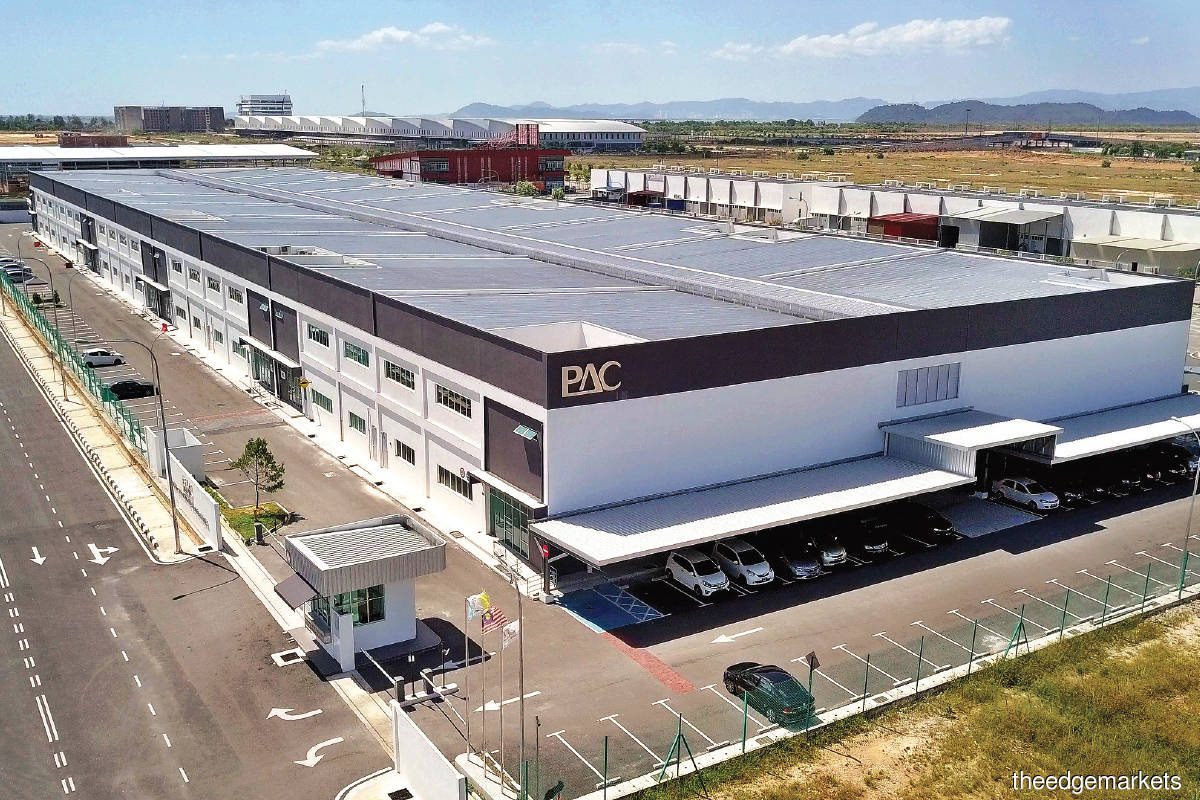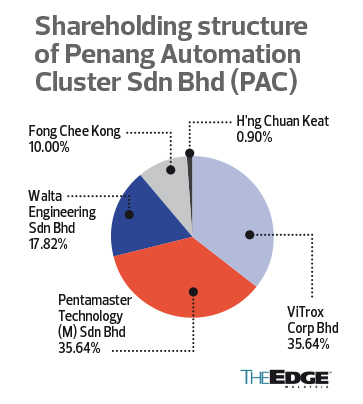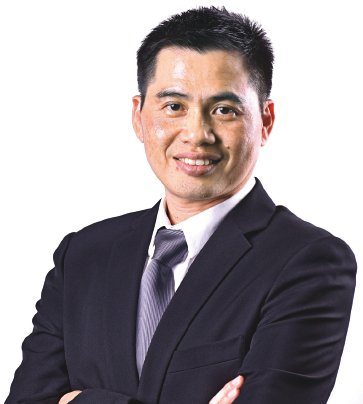
Tech: Penang Automation Cluster Aims to Build Local Supply Chain and Elevate SME Capabilities


Building automated equipment systems is akin to the assembly and production of vehicles. Visitors to automotive manufacturing plants would have observed that they usually operate in industrial clusters — the better to attract customers, precision engineering firms and material suppliers. Likewise for technology equipment manufacturers and automation houses, as they would require high-precision metal fabrication components, modules and systems to build their products.
More than four years ago, three tech-savvy manufacturers — ViTrox Corp Bhd, Pentamaster Corp Bhd and Walta Engineering Sdn Bhd — conceived the idea to build a world-class fabrication cluster at Batu Kawan Industrial Park in Penang that would serve as a one-stop metal component supply chain hub.
The result was Penang Automation Cluster Sdn Bhd (PAC), formed in January 2017 with the mission of enhancing the local ecosystem and uplifting the capabilities of local small and medium enterprises (SMEs).
The cluster’s open and transparent approach to knowledge transfer, as well as business support from shareholders, are key to elevating SMEs at the industrial park, stresses PAC operations manager H’ng Chuan Keat.
“Our main goal is to build and manage the local supply chain to support large local companies (LLCs) and multinational corporations (MNCs). We aim to support and fund the cluster’s development,” he tells The Edge in an interview.
Basically, clusters are geographic concentrations of interconnected companies and institutions in a particular field, and they usually encompass an array of linked industries and other entities important to competition.
Silicon Valley and Hollywood are arguably the world’s best-known clusters. Others of note are the California Wine Cluster, the Italian leather fashion cluster, and the financial hubs of London and Hong Kong.
PAC’s main task was to visit as many precision machining and metal fabrication SMEs as possible to share the concept of an automation cluster, prior to its commencement of operations in October 2019. Another important task was to get the design and construction of cluster buildings up and running by appointing the engineers and main contractor.
“The journey wasn’t as smooth as we had imagined because not many SMEs subscribed to the concept of PAC, but I was delighted to have seven SMEs agree to join PAC,” H’ng recalls, adding that the cluster’s construction progress was delayed for almost six months because of unforeseen circumstances.
PAC has 17 industrial lots designed mainly for precision machining, including two larger units that are dedicated to computer numerical control (CNC) double column and sheet metal fabrication.
Together with the seven SMEs, it commenced operations about two years ago, occupying the remaining 10 industrial lots. Unfortunately, an SME left the cluster a year later because of an issue with skilled labour.
A check on the Companies Commission of Malaysia (SSM) website shows that PAC’s revenue had grown significantly by almost 15 times to RM5.115 million in the financial year ended Dec 31, 2020, from RM343,813 the year before.
However, the company remained in the red with a net loss of RM3.202 million in FY2020. As losses had widened by 53% from RM2.097 million the year before, its accumulated losses totalled RM5.602 million. Total assets as at Dec 31 last year stood at RM49.001 million, of which RM40.395 million were non-current assets.
H’ng stresses that PAC is still at an initial stage of growth, and that it was still financially in the red partly because of the Movement Control Order (MCO 1.0) that was implemented in March last year, which had affected production output and overall revenue. “In late 2019 and early 2020, we were at the launching stage with low revenue but high start-up costs and heavy overheads, such as bank loan instalments for land, building construction and machinery. Moreover, due to insufficient technical knowledge and skilled labour as well as an incomplete supply chain supporting our precision tooling operations, we had relatively low sales and were not able to operate at full capacity.”
Following an expansion in the second quarter of this year, PAC’s revenue is expected to breach the RM10 million mark by the end of FY2021 — barring any unexpected circumstances brought about by Covid-19.
“We will be increasing the volumes by adding more machines early next year. We anticipate that by the middle of 2023, PAC should be able to break even financially,” he remarks.
Asked if PAC has plans to go for a listing, H’ng says, “We do have such an idea in mind but PAC needs a few more years to increase the volume.”
He points out that the three original shareholders — ViTrox, Pentamaster and Walta Engineering — have been playing a key role in financial investments, whereas the fourth largest shareholder, Fong Chee Kong, serves as a technical adviser in the company’s day-to-day operations.
“My main role is managing the overall cluster’s well-being and company operations to meet PAC’s main objectives set by the board,” says H’ng.
Facing limitations and challenges


H’ng explains that PAC’s original concept was to centralise orders from ViTrox and Pentamaster at the cluster, and to subsequently distribute the orders to the SMEs. However, without pioneer status — coupled with sales and service tax issues — PAC is unable to execute the original plans at present.
“So, what we are doing now is that ViTrox and Pentamaster deal directly with the SMEs and PAC for orders, but PAC also serves as the management company to monitor and compile the sales statistics for submission to shareholders in order to ensure a fair share of orders for all SMEs,” he says.
When the cluster is mature enough to accept orders from MNCs or other external customers, H’ng hopes that PAC will be able to deal directly with these clients and distribute the orders to the SMEs.
As things stand, SMEs in the PAC cluster are receiving stable orders from the shareholders, as all orders from ViTrox and Pentamaster — whose manufacturing plants are in the vicinity of PAC — are prioritised by the cluster, he explains.
“This is the commitment by the shareholders to guarantee business for the SMEs as well as PAC, so that the SMEs can concentrate on growing their capacity and sales, and investing in higher-end machines,” H’ng says of the business model.
With the support of orders from ViTrox and Pentamaster, the cluster can focus on sourcing high-quality fabrication parts for the customers on a timely basis.
“I would like to think that the future of PAC is very bright with their support. The cluster has a good growth prospect. Besides the electrical and electronics (E&E) industry, we could also support industries of LLCs and MNCs, and maybe even export markets in the future,” says H’ng, adding that PAC is seriously looking into a second-phase expansion within the next two to three years.
“We are in touch with Penang Development Corp to reserve and secure a five-acre parcel of land next to our current cluster. By expanding into the second phase, we will be adding more business partners,” he points out.
PAC currently has an occupancy rate of 88%, but some SMEs are already facing issues with insufficient space for expansion as they recently invested in new machines.
“To further expand and improve, they need more space. In fact, one SME is planning to expand by building a new facility. I believe this is our evidence of success in nurturing the SME towards moving up the value chain and becoming independent one day,” H’ng observes proudly.
Meanwhile, PAC established PAC Meditech Sdn Bhd in September last year to produce face masks after MCO 1.0 was declared. “We are of the opinion that the pandemic may not end so soon, and hence there will be long-term demand for face masks. Since we have the space and capability in automation, we decided to venture into the medical devices business,” says H’ng.
Apart from supplying face masks to PAC’s shareholders and SMEs in the cluster, PAC Meditech also intends to sell these affordable but high-quality three-ply face masks in the local market.
Source: Edge Weekly

